YouTube
This small constructable rasberry pi pc by Kano meant for kids is actually really inventive and is giving me a raging brainer regarding a more powerful x86 pc design. A simple box is all you need really to hold the monitor and motherboard in place in addition to supporting cabling.
The way that case is designed so that it tilts towards the back would be an awesome idea to steal and rebuild in sheet steel. You could then theoretically attach a small hdmi monitor to the outside of it with magnets or mount it inside with screws and cut open a hole in the side of the case. More work that way though.
This small constructable rasberry pi pc by Kano meant for kids is actually really inventive and is giving me a raging brainer regarding a more powerful x86 pc design. A simple box is all you need really to hold the monitor and motherboard in place in addition to supporting cabling.
The way that case is designed so that it tilts towards the back would be an awesome idea to steal and rebuild in sheet steel. You could then theoretically attach a small hdmi monitor to the outside of it with magnets or mount it inside with screws and cut open a hole in the side of the case. More work that way though.
Last edited:
I have a Samsung Galaxy Tab S2 that is now several years old
My Samsung Note 2 phone was still going strong after nearly 6 years, but 16 GB of memory isn't enough any more. Every time an app gets updated it grows. I had to keep removing apps to keep it alive. The AT&T installed apps can't be uninstalled without rooting the phone, so I removed the sim and gave it to one of the grandkids to play games on.....he hasn't broken it yet, but he did kill an old Toshiba laptop I gave him. It seems that "Toshi" didn't like being stepped on. Toshi's big brother still works, but it is about 10 years old, still has XP and runs a budget processor, maybe a good candidate for some Linux experiments. I got a new "Motorola" (Lenovo) phone that was cheap and works good. The new Samsungs are out of my price range and I'm not a phone person.
The only motherboard I've owned so far which hasn't failed yet is an intel branded one.
I have used Intel motherboards with good results and some of their small form factor low profile boards (smaller than mini ITX) run directly on a 19 volt brick. Sadly Intel left the motherboard business a couple of years ago. Intel now makes "NUC's" which are smaller and also run on 19 volt bricks. Too bad they won't sell naked boards to us mere mortals, corporate clients only. It's pretty easy to gut a NUC and use the board, but it's wasting money. A $200 NUC is far more expensive than a $75 motherboard, but the processor is already installed...permanently. No overclocking either.
Even the cheapest desktop monitors have at least some drop resistance because they have a steel backplate inside of them.
Not any more. I have removed the guts from several monitors and remounted in wood frames. There is a thin piece of aluminum covering the rear of the panel itself just for reducing backlight emission. Granted I use cheap ACER or ASUS displays, except for one DELL that I needed for its dimensions. None had any reinforcement other than plastic ribs.
unnecessary and expensive for most people who just want to browse the web and watch youtube videos
I use my phone as a hotspot, linked to an older iPAD for that type of duty.
The luggable box that you referred to was a popular DIY PC in the late 80's and early 90's. You could buy a case with power supply and populate it with any XT sized motherboard / CPU / RAM, add hard drives and go. I built a few. The LCD's were monochrome VGA. Mine had a 16 MHZ 80386 chip in it overclocked to 40 MHz.
bolting steel bits together to get some kind of shielding and design going on
Aluminum flashing and pop rivets.
A prebuilt alternative would be an "industrial portable computer".
I did not know that the "luggable" concept had returned.....I'll check out the ones you linked. Probably too expensive, and I already have a mini ITX motherboard setup running. I built into a wood box not too different in size from the 21 inch luggable you linked. It has a mini ITX MB with a core i7, 16 GB ram, 1.5 TB SSD and 2 TB spinning platter disk, 10 WPC class D amp, 20 inch 1080 screen and 12 volt input 350 watt power supply. It pulls 75 watts maxed out running 8 threads of Prime 95, 30 watts idle. I use a Logitech wireless keyboard.
It's too big to use in a car, but I did use it a lot sitting out on the beach in Florida writing Arduino code while cranking out some tunes. Blew one of the speakers though. Got a lot of weird looks and a few questions. I'm planning to rebuild this into the briefcase with the smaller 4K screen to see if I like that form factor.
Here are two pictures. The screen is the guts from a $79 ACER 20 inch monitor. The speakers have since been replaced with some Tectonic Elements units as the Tang Bands didn't like the 10 watt TI EVB rattling their guts out. They now have a perf metal cover. The back has been removed to show the guts. There is a screen covering a hole to duct the processor fan out the back. Air is drawn in through perf metal speaker cover, over the MB and out the back. There are earphone and USB jacks on the panel between the speakers.
Attachments
rasberry pi pc by Kano
I saw those in Toys R Us last Christmas.....Raspberry Pi model 2, low res screen....$200+. Does not compute! I got a model 3 with a hi res touch screen for $70 at a hamfest. It all runs fine with a model car battery. Still haven't made a box for it yet.
raging brainer regarding a more powerful x86 pc design
I'm thinking 10 inch touch screen tablet with W7....Why am I thinking this? Because it's just waiting for some woodworking time.....it's currently snowing outside.
3 year old Intel NUC running a core i5, 16 GB memory and 512 GB SSD. 10 inch 1280 X 800 touch screen from Amazon. It's currently displaying a Youtube video. The NUC will drive the touch screen and a TV set up to 4K simultaneously via HDMI, even though it was never designed for 4K.
I have popped up the bottom cover and measured the battery on the Sony laptop, when the charger is disconnected there's 0 volt between all the pins.
Charger disconnected measured ca 20V on the plug.
With the charger connected and battery in place the voltages between GND and the following battery connector pins are:
pin#
1. +Vcc 0V
2. 0.12V
3. 3.30V (logic voltage?)
4. 3.30V
5. 2.15V
6. 0V
7. GND
Removing the battery pack but with charger still connected the same voltage readout still remains on the laptop battery connector pins, pin 4, 5 and 6 increased by a scant ~30mV.
While typing here I did concurrently pry up the battery package, inside one finds 3 Li-Ion cells 3.7V per cell, each cell bank consists of 2 x 8,8Wh.
WARNING: Be very careful if one attempts at trying to pry up in particular battery packs containing Li-Ion battery cells due to the high risk of explosion!
Measuring directly over the 3 cells reads out 8.4V and this is after some 2-3 months since it failed, but those 8.4V are nowhere to be seen on the connector so with the kind of digital logic complexity involved it seems rather hopeless to fix it.
Looking a bit around the net it seems to be it is a "smart battery" type, took some pictures of the PCB which contains some quite tiny SMD components.
BU-911: How to Repair a Laptop Battery – Battery University
BU-601: How does a Smart Battery Work? – Battery University
The video link below (don't waste your 4 mins on this Sony consumer video as it doesn't go in depth, just look at the 2 last snapshots attached) explains the "battery care" feature I mentioned earlier, ie. charging up to 80% or 50% in order to increase battery life time, also the battery manager has never ever shown anything else but "Good" battery health status before the laptop suddenly stopped functioning on battery supply only.
How to troubleshoot a VAIO notebook battery - YouTube
Charger disconnected measured ca 20V on the plug.
With the charger connected and battery in place the voltages between GND and the following battery connector pins are:
pin#
1. +Vcc 0V
2. 0.12V
3. 3.30V (logic voltage?)
4. 3.30V
5. 2.15V
6. 0V
7. GND
Removing the battery pack but with charger still connected the same voltage readout still remains on the laptop battery connector pins, pin 4, 5 and 6 increased by a scant ~30mV.
While typing here I did concurrently pry up the battery package, inside one finds 3 Li-Ion cells 3.7V per cell, each cell bank consists of 2 x 8,8Wh.
WARNING: Be very careful if one attempts at trying to pry up in particular battery packs containing Li-Ion battery cells due to the high risk of explosion!
Measuring directly over the 3 cells reads out 8.4V and this is after some 2-3 months since it failed, but those 8.4V are nowhere to be seen on the connector so with the kind of digital logic complexity involved it seems rather hopeless to fix it.
Looking a bit around the net it seems to be it is a "smart battery" type, took some pictures of the PCB which contains some quite tiny SMD components.
BU-911: How to Repair a Laptop Battery – Battery University
BU-601: How does a Smart Battery Work? – Battery University
The video link below (don't waste your 4 mins on this Sony consumer video as it doesn't go in depth, just look at the 2 last snapshots attached) explains the "battery care" feature I mentioned earlier, ie. charging up to 80% or 50% in order to increase battery life time, also the battery manager has never ever shown anything else but "Good" battery health status before the laptop suddenly stopped functioning on battery supply only.
How to troubleshoot a VAIO notebook battery - YouTube
Attachments
-
 Sony VAIO battery management 2.jpg28.6 KB · Views: 36
Sony VAIO battery management 2.jpg28.6 KB · Views: 36 -
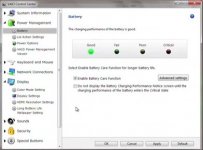 Sony VAIO battery management 1.jpg25.4 KB · Views: 45
Sony VAIO battery management 1.jpg25.4 KB · Views: 45 -
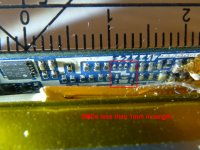 Sony VAIO Li-Ion Battery Pack 6.jpg163.2 KB · Views: 47
Sony VAIO Li-Ion Battery Pack 6.jpg163.2 KB · Views: 47 -
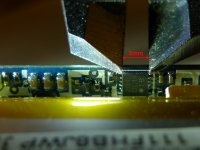 Sony VAIO Li-Ion Battery Pack 5.jpg136.1 KB · Views: 42
Sony VAIO Li-Ion Battery Pack 5.jpg136.1 KB · Views: 42 -
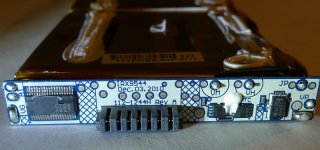 Sony VAIO Li-Ion Battery Pack 4.jpg85.1 KB · Views: 52
Sony VAIO Li-Ion Battery Pack 4.jpg85.1 KB · Views: 52 -
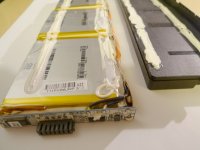 Sony VAIO Li-Ion Battery Pack 3.jpg74.5 KB · Views: 133
Sony VAIO Li-Ion Battery Pack 3.jpg74.5 KB · Views: 133 -
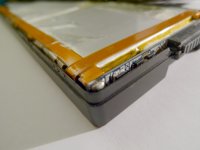 Sony VAIO Li-Ion Battery Pack 2.jpg60.8 KB · Views: 143
Sony VAIO Li-Ion Battery Pack 2.jpg60.8 KB · Views: 143 -
 Sony VAIO Li-Ion Battery Pack 1.jpg55.4 KB · Views: 155
Sony VAIO Li-Ion Battery Pack 1.jpg55.4 KB · Views: 155 -
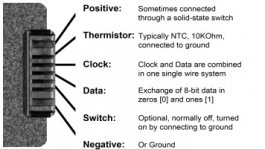 lap1(2).jpg23.2 KB · Views: 39
lap1(2).jpg23.2 KB · Views: 39
Last edited:
And what did we buy today?
I "upgraded" from TimeWarner innernet to Spectrum. Got a "new" innernet modem. The dang thing has different failings every time it powers-up. Took an hour and several re-starts to get registered on the cable. Wi-Fi dead 3 of 4 starts (I'd hoped to verify with a smartphone). On ethernet I can get to the management interface about 1 in 2 tries, but it goes dead in 5 to 20 minutes. An internal "ping" (with some other name) claimed replies from TWC.COM, but would not ping any other host (and would not take naked IP numbers). I never once got my PC out to the internet. The symptom was no-DNS, but I think it was just no connectivity at all, or not long enough to run upstairs from the reset button to the PC. While this started with a "survey"(sales)-call from a guy with a Spectrum shirt and card, all my account info still says TimeWarner.
The modem is a Technicolor from several years ago and not worth much. It may indeed be time to buy-my-own.
I guess I will spend a day on the TELEphone (in this day and age??) rehearsing every page of the support-script with some new-hire, before DEMANDING a return shipping label.
I "upgraded" from TimeWarner innernet to Spectrum. Got a "new" innernet modem. The dang thing has different failings every time it powers-up. Took an hour and several re-starts to get registered on the cable. Wi-Fi dead 3 of 4 starts (I'd hoped to verify with a smartphone). On ethernet I can get to the management interface about 1 in 2 tries, but it goes dead in 5 to 20 minutes. An internal "ping" (with some other name) claimed replies from TWC.COM, but would not ping any other host (and would not take naked IP numbers). I never once got my PC out to the internet. The symptom was no-DNS, but I think it was just no connectivity at all, or not long enough to run upstairs from the reset button to the PC. While this started with a "survey"(sales)-call from a guy with a Spectrum shirt and card, all my account info still says TimeWarner.
The modem is a Technicolor from several years ago and not worth much. It may indeed be time to buy-my-own.
I guess I will spend a day on the TELEphone (in this day and age??) rehearsing every page of the support-script with some new-hire, before DEMANDING a return shipping label.
Siemens MicroMaster 410 3 phase inverter and accessory controller panel.. I will use this in conjunction with a 3 phase DIY LPF designed by a friend that cleans up the output enough to safely use the 410 with small 3 phase turntable motors like the TD-124 specific Papst Ausenlauffer motor I have sitting in a closet in the man cave.
Basically the filter has a combination of common and differential mode filtering that removes most of the PWM related HF, and makes a passable sine wave out of the inverter's output.
Basically the filter has a combination of common and differential mode filtering that removes most of the PWM related HF, and makes a passable sine wave out of the inverter's output.
Attachments
Tubelab, in your 2nd picture, I noticed a nice rack of test gear.
In my former life I was an RF engineer at Motorola for 41 years. My employment contract prevented me from engaging in "any activities that competed with, or were similar to any business interest of Motorola." Tinkering with tubes is OK, designing a state of the art ham radio is not. That contract no longer applies, so through surplus sales, hamfests, and Ebay, I am attempting to recreate the setup I had in the last years at Mot. Much of the equipment was purchased as defective, and needed repair.
My bench was made of older HP "hand me downs" cast off by other engineers when they got new stuff. It was capable of handling any task necessary for a complete public safety radio design.
Most of my collection is older HP and Agilent RF gear, there are:
4 X HP8664 RF signal generators, working, plus 2 hulks for parts
2 X HP8642 RF signal generators, working, plus 1 hulk for parts
1 X HP8643 RF signal generator, working
1 X HP8644 RF signal generator, working
1 X HP8753C Network Analyzer, dim display, but works
1 X HP8594E Spectrum Analyzer, works
1 X HP4352B VCO / PLL test set, works
1 X Agilent E4406A Transmitter test set, works
1 X HP 436A Power Meter with head, works
1 HP3478A multimeter, works
There are also several smaller boxes, audio oscillators, a function generator, and an HP8903A audio analyzer that I use for designing tube amps.
Siemens MicroMaster 410 3 phase inverter and accessory controller panel.. I will use this in conjunction with a 3 phase DIY LPF designed by a friend that cleans up the output enough to safely use the 410 with small 3 phase turntable motors like the TD-124 specific Papst Ausenlauffer motor I have sitting in a closet in the man cave.
Basically the filter has a combination of common and differential mode filtering that removes most of the PWM related HF, and makes a passable sine wave out of the inverter's output.
You win
It's too big to use in a car
That is my problem. Fortunatley there are small storage cases available locally at supercheapauto which I'm considering building a "laptop" into:
ToolPro Multi Storage Case - 7 Compartment - Supercheap Auto
ToolPro Multi Storage Case - 23 Compartment - Supercheap Auto
There is also the lack of space for a monitor which makes me concerned about using those storage cases to deal with, maybe if I get a screen that is laptop sized but is also universal, ie something super thin but has hdmi and audio, might work. I could also then just mount it using either gorilla tape or magnets.
In fact I would love to have two screens so that I can drag a youtube window onto one screen and have ebay (or online calculators) open up on the main screen. This is a lot easier for me because then when a youtube video stops I can simply type into the window what else I want to watch instead of having to type it in using a touch screen like most tablet designs require me to do.
So yes as you said small monitors might be good, but I want two. *rubs chin*
There are also the usual foam padded storage cases:
ToolPro Safe Case - 260 x 245 x 175mm - Supercheap Auto
I haven't yet decided if this is a good idea or not, ie if there is sufficient space. I have other projects on my mind at the moment such as car audio too, But there "should" be enough for a small itx case such as these:
SilverStone PT13B-120 Thin Mini-ITX Case Black [SST-PT13B-120] : PC Case Gear
In Win Chopin Mini-ITX Chassis with 150W PSU Black [CHOPIN-BLACK] : PC Case Gear
I simply don't like the idea of an unshielded pc motherboard. too many things can go wrong for example if you want to plug something into the motherboard or do field repairs and static damages something, or radio emissions cause a computer to freeze or your significant other (if present) comes up and gives you a hug while wearing polyester.
Considering small portable dual banders can cause RCD's to trip (https://www.youtube.com/watch?v=vMrw9dpDJjI) I'm definitley going to be wanting something inside of a metal case, especially if I'm going to be taking it with me to ham events.
Last edited:
DELL
Seeing a small ex office form factor pc on ebay gave me the idea that these cases are really just a luggable pc without a monitor. That would be a good starting point I think if you could get one that is atx/matx compatible. All you would need to do then is to simply attach a monitor to the outside of it and add a battery internally with a dc-dc psu.
I think the closest "common" matx/itx case would be the S601 case.
It already has the same dimensions as a luggable pc and should be able to stand on its own even with a monitor attached to the side. I would recommend copying the VESA mounting standard and simply drilling some holes into the side of the case in a clear portion.
Then add a handle to the top. Maybe some rugged feet to the bottom, in walnut.
Walla. You then have a powerful luggable pc.
Attachments
Last edited:
The In Win BL040 might be a better choice though. more steel means more strength. I also like the fact that the psu is smaller so therefore the space is more efficiently used, and bottom heavy.
These cases also allow you to have a GTX 1050 low profile card in them, in addition to some other card such as DVB-T or DVB-S. Probably the best luggable pc to be taking camping if I ever do.
These cases also allow you to have a GTX 1050 low profile card in them, in addition to some other card such as DVB-T or DVB-S. Probably the best luggable pc to be taking camping if I ever do.
Attachments
Last edited:
This guy also has the right idea
I stopped watching when his component list went over $1K and he was only halfway through the stack of stuff. It's not too different from my Box PC, but again not easily used in a car. I also used the remote battery box (a car jump starter) for my "beach bum" code writing sessions.
I simply don't like the idea of an unshielded pc motherboard.
The "breifcase" targeted for the prototype build is actually aluminum clad, and the price was right. It's also too big by a couple inches in both X and Y dimensions, but if it works out, or is close, the final case will be smaller.
I may or may not build an interim case out of cheap pine, but the finished case will likely be oak because it handles abuse better. I have some thin aluminum roof flashing for shielding the final box.
Attachments
You Americans just scare the **** out of me.
+1
- Home
- Member Areas
- The Lounge
- And what did we buy today?
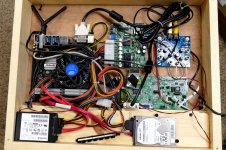
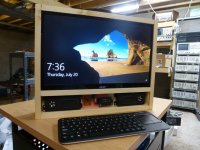
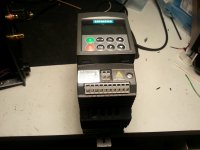
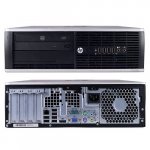
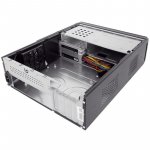
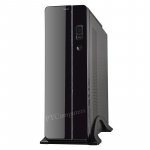
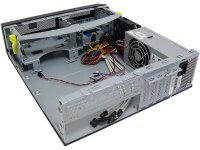
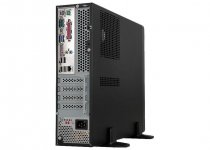
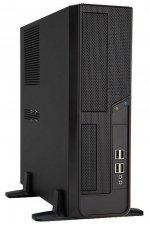
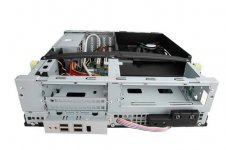
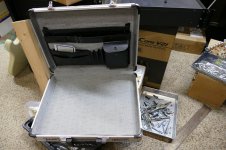
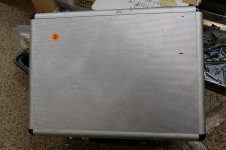
![DSCN3059[1].jpg](/community/data/attachments/618/618874-c49d43d570b70eb5b11e83facab4d122.jpg)
